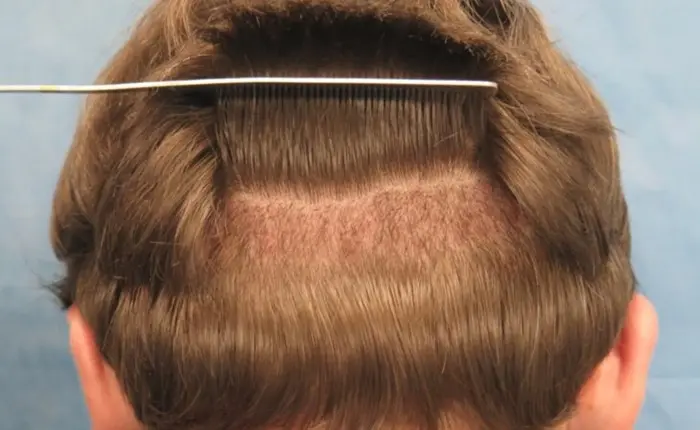Platelet-Rich Plasma (PRP) therapy has gained significant traction in the field of hair restoration. Known for its ability to enhance healing and promote hair growth, PRP is often considered a complementary treatment to hair transplants. This article aims to provide a comprehensive guide on the optimal timing for PRP treatments after undergoing a hair transplant.
Understanding PRP Therapy
What is PRP?
Platelet-Rich Plasma (PRP) therapy involves drawing a small amount of the patient’s blood, processing it to concentrate the platelets, and then injecting the concentrated platelets back into the scalp. Platelets contain growth factors that promote tissue repair, angiogenesis, and cell proliferation, making PRP a powerful tool in regenerative medicine.
How Does PRP Work for Hair Restoration?
PRP therapy for hair restoration leverages the growth factors in platelets to stimulate hair follicle activity and promote new hair growth. These growth factors can enhance the survival of transplanted hair follicles, improve hair thickness, and accelerate the hair growth cycle.
The Hair Transplant Process
Pre-Transplant Preparation
Before undergoing a hair transplant, patients typically undergo a thorough evaluation to determine the cause of hair loss and assess the suitability for surgery. Pre-transplant care often includes managing any underlying medical conditions and discontinuing certain medications that could interfere with the procedure.
The Transplant Procedure
Hair transplants involve extracting hair follicles from a donor area (usually the back of the scalp) and transplanting them to the balding or thinning areas. There are two main techniques: Follicular Unit Extraction (FUE) and Follicular Unit Transplantation (FUT).
Post-Transplant Recovery
The immediate post-transplant period is critical for the survival and growth of the transplanted hair follicles. Patients are advised to follow a strict aftercare regimen, which includes gentle washing, avoiding direct sunlight, and refraining from strenuous activities.
See Also: 8 Things You Should Avoid Before A Hair Transplant
Integrating PRP with Hair Transplant
Timing of PRP Treatment
One of the most frequently asked questions is when to start PRP treatments after a hair transplant. The timing can vary based on individual circumstances, but there are general guidelines to consider.
Immediate Post-Transplant Period (0-1 Month)
In the immediate aftermath of a hair transplant, the scalp is healing from the surgical procedure. PRP treatments are typically not recommended during this time to avoid disrupting the delicate healing process.
Early Post-Transplant Period (1-3 Months)
After the first month, the transplanted follicles enter the resting (telogen) phase before starting to grow new hair. PRP treatments can be initiated during this period to support follicle health and encourage the growth phase.
Mid Post-Transplant Period (3-6 Months)
Between three to six months post-transplant, new hair growth becomes more noticeable. PRP treatments can enhance this growth and improve hair thickness and density.
Late Post-Transplant Period (6-12 Months)
Continuing PRP treatments up to a year post-transplant can further strengthen hair follicles and optimize hair growth outcomes. Regular sessions during this period can help maintain and improve the results achieved from the transplant.
Frequency of PRP Sessions
The frequency of PRP treatments can vary based on the individual’s response and the physician’s recommendation. Typically, a series of PRP treatments is administered over a period of several months.
Initial Phase
During the initial phase (first 3-6 months), PRP sessions are often conducted monthly to provide consistent stimulation to the hair follicles.
Maintenance Phase
After the initial phase, maintenance sessions can be scheduled every 3-6 months to sustain the benefits of PRP therapy and ensure long-term hair growth and health.
Benefits of PRP After Hair Transplant
Enhanced Healing
PRP contains growth factors that can accelerate the healing process, reduce inflammation, and improve blood flow to the transplanted area, which is crucial for the survival and growth of the transplanted follicles.
Improved Hair Growth
PRP treatments can stimulate dormant hair follicles and enhance the growth of new hair. This can lead to thicker, denser hair and an overall improvement in hair quality.
Reduced Hair Loss
In addition to promoting new hair growth, PRP can also help reduce ongoing hair loss by strengthening existing hair follicles and prolonging the growth phase of the hair cycle.
Potential Risks and Considerations
Side Effects
PRP therapy is generally considered safe since it uses the patient’s own blood. However, potential side effects can include mild pain at the injection site, scalp tenderness, swelling, and minor bruising.
Contraindications
PRP may not be suitable for individuals with certain medical conditions such as platelet dysfunction syndromes, chronic liver disease, or those undergoing anticoagulant therapy. A thorough medical evaluation is essential before initiating PRP treatments.
Cost
PRP therapy can be expensive, and since it is often not covered by insurance, patients should be prepared for the financial commitment. The cost can vary based on the number of sessions required and the geographical location of the clinic.
Conclusion
The Optimal Timing for PRP
The optimal timing for PRP treatments after a hair transplant generally starts around one month post-surgery. This timing allows the scalp to heal from the transplant procedure and prepares the hair follicles to respond to the growth-stimulating effects of PRP.
Personalized Treatment Plans
It’s important to note that the timing and frequency of PRP treatments should be tailored to the individual’s specific needs and the physician’s recommendations. A personalized treatment plan ensures that the patient receives the maximum benefit from both the hair transplant and PRP therapy.
Final Thoughts
PRP therapy is a valuable addition to hair transplant procedures, offering numerous benefits such as enhanced healing, improved hair growth, and reduced hair loss. By understanding the optimal timing for PRP treatments, patients can achieve the best possible outcomes and enjoy a fuller, healthier head of hair. Consulting with a qualified hair restoration specialist is crucial to developing a comprehensive treatment plan that meets individual needs and expectations.
Related topics:

